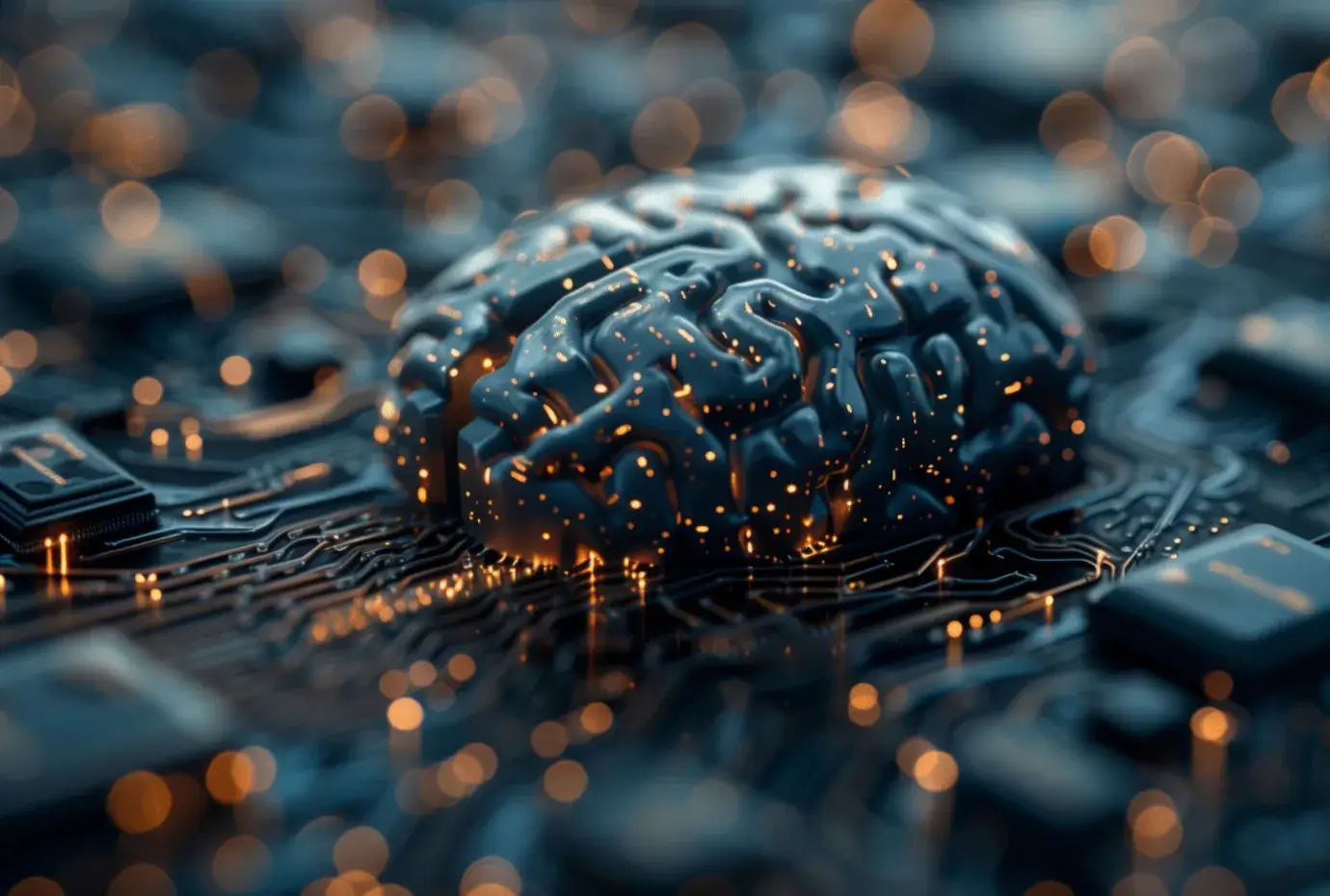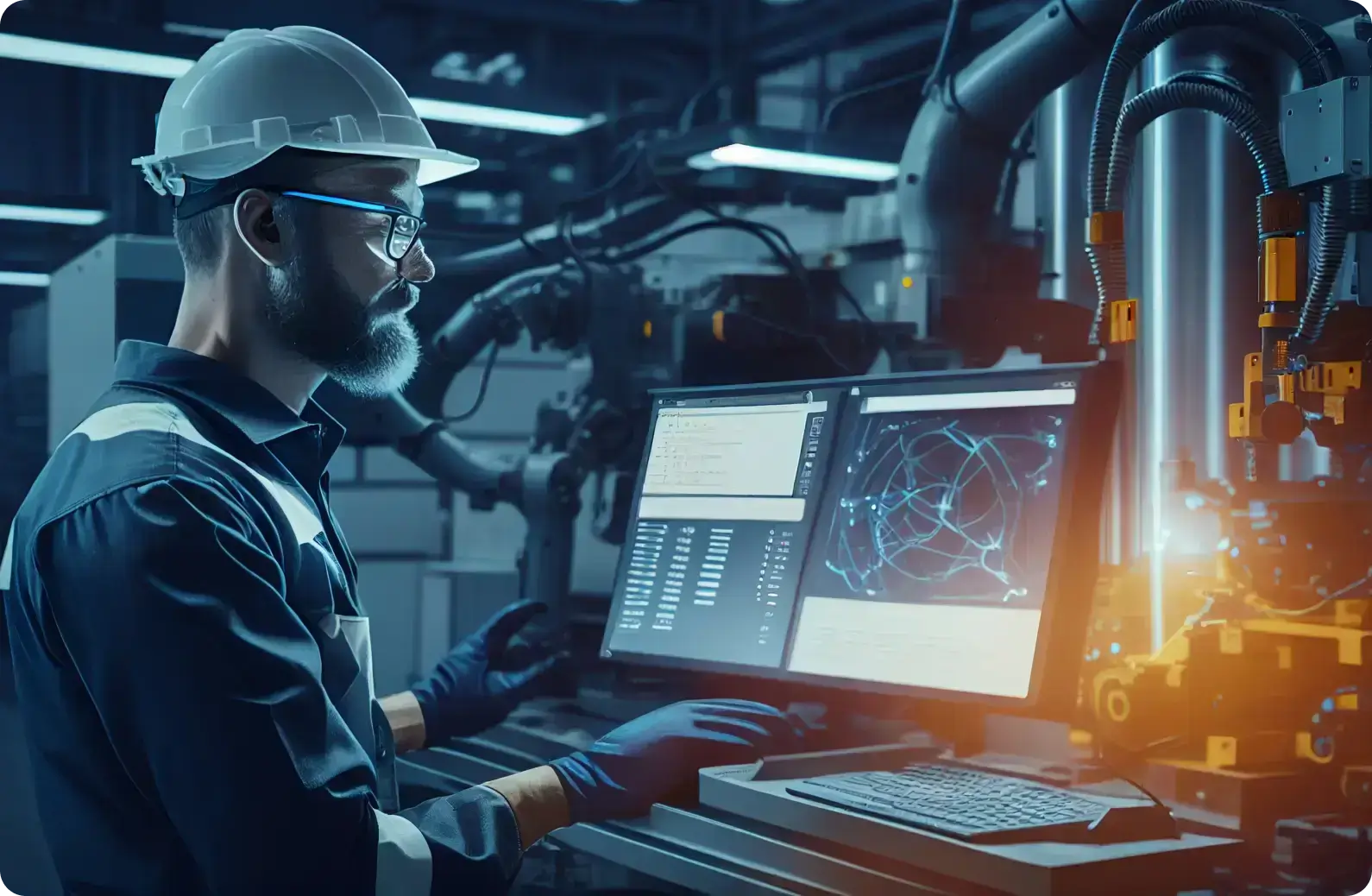What is machine
learning?

Machine learning algorithms are a subset of artificial intelligence (AI) that enable systems to learn and improve from experience without being explicitly programmed.
Machine learning services are to help teach a computer to recognize patterns and make decisions, similar to how humans learn from past experiences. Machine learning algorithms can identify objects in images, predict stock market trends, or recommend tailored products to particular customers.
Why choose DevicoAI for custom ML development services






High retention rate
96%
Our dedicated team ensures consistent support and expertise, significantly above the industry average of 80%.
Wide expert network
3000
Access to over 3000 engineers and AI experts.
Proven track record
500,000
Over 500,000 man-days successfully delivered.
Support
24/7
Highly experienced management team available around the clock.
Drive your business forward
Businesses that implement AI and machine learning could see at least a 15-20% increase in profitability
Computer vision development process
01
Data collection
Gathering relevant data from various sources.

02
Data preparation
Cleaning and organizing data to make it suitable for analysis.

03
Model training
Using algorithms to train a model on the prepared data.

04
Model evaluation
Assessing the model's performance to ensure it meets the desired criteria.

05
Model deployment
Implementing the model in a real-world environment.

06
Monitoring and maintenance
Continuously tracking the model's performance and updating it as necessary.

Industry-specific
ML development
Healthcare
Statistics show that the healthcare sector can save as much as 70% of drug discovery costs with the applications of ML in healthcare.
The areas with the most significant machine learning use potential in healthcare are ML-based diagnosis, early pandemics identification and imaging diagnostics.
Use cases:
- Disease identification and diagnosis
- Treatment personalization
- Remote monitoring and wearable devices


Statistics show that the healthcare sector can save as much as 70% of drug discovery costs with the applications of ML in healthcare.
The areas with the most significant machine learning use potential in healthcare are ML-based diagnosis, early pandemics identification and imaging diagnostics.
Use cases:
- Disease identification and diagnosis
- Treatment personalization
- Remote monitoring and wearable devices

With the low data SNR and large volumes of legacy data, machine learning is a right tool for the financial ecosystem.
Almost 70% of financial services companies already use ML, forcing other financial institutions to rethink their traditional approaches to handling financial activities on the market.
Use cases:
- Algorithmic trading
- Underwriting and credit scoring
- Financial monitoring

Machine learning development allows retailers to increase their sales by 20% and reduce inventory costs by 30%.
Amazon’s recommendation engine, powered by machine learning, accounts for at least 35% of its total sales by suggesting products based on customer behavior.
Use cases:
- Demand forecasting
- Inventory management
- Personalized marketing

In the manufacturing industry there are 2 critical pillars - quality control and process optimization. With ML applications, manufacturers are set to achieve unparalleled precision and efficiency in these fields.
According to a McKinsey report, companies adopting AI and ML-driven strategies in manufacturing have witnessed a 30% to 50% reduction in machine downtime, 15% to 30% improvement in labor productivity, 10% to 30% increase in throughput, and 10% to 20% decrease in the cost of quality.
Use cases:
- Predictive maintenance
- Quality control
- Supply chain optimization
Save time and money
Reduce customer-processing costs by 45% with ML and demand to speak to an agent by 25%
Advanced machine learning technologies
Criteria
Deep learning
Transfer learning
Neural networks
Definition
A subset of ML with neural networks having multiple layers.
Reusing a pre-trained model on a new but similar task.
Computational models inspired by human brain structure.
Goal
Automatically discover representations from data, particularly for complex tasks.
Improve learning efficiency by leveraging existing knowledge.
Simulate brain functions to recognize patterns and make decisions.
Algorithms in focus
Convolutional Neural Networks (CNNs), Recurrent Neural Networks (RNNs), Generative Adversarial Networks (GANs).
Fine-tuning, domain adaptation.
Feedforward Neural Networks, Multilayer Perceptrons (MLPs), Deep Belief Networks (DBNs).
Data requirement
Requires vast amounts of labeled data.
Requires pre-trained models and less data than training from scratch.
Requires structured data, scalability with large datasets.
Advantages
High accuracy for tasks like image and speech recognition.
Reduced training time and improved performance on related tasks.
Flexibility to model complex relationships and interactions.
Applications
Image classification, natural language processing (NLP), autonomous vehicles.
Medical imaging, natural language translation, personalized recommendations.
Pattern recognition, predictive analytics, game AI.
Techniques
Backpropagation, dropout regularization, data augmentation.
Model fine-tuning, transfer learning architectures like BERT and GPT.
Activation functions (ReLU, sigmoid), network architectures (feedforward, recurrent).
Complexity
Moderate.
High.
Very High.
Machine learning algorithms we use
Linear regression
Used for predictive analysis. It models the relationship between a dependent variable (target) and one or more independent variables (features) by fitting a linear equation to the observed data.
For instance, predicting housing prices based on factors like square footage, number of bedrooms, and location involves finding the best-fit line that minimizes the difference between the actual and predicted values.
The simplicity of linear regression makes it a powerful tool for understanding relationships within data, though it assumes a linear relationship that might not always be present.


Used for predictive analysis. It models the relationship between a dependent variable (target) and one or more independent variables (features) by fitting a linear equation to the observed data.
For instance, predicting housing prices based on factors like square footage, number of bedrooms, and location involves finding the best-fit line that minimizes the difference between the actual and predicted values.
The simplicity of linear regression makes it a powerful tool for understanding relationships within data, though it assumes a linear relationship that might not always be present.

Used for binary classification problems, where the outcome is a categorical variable with two possible values, such as spam vs. not spam or disease vs. no disease. Uses a logistic function to model the probability of the default class and outputs values between 0 and 1.
For example, logistic regression can predict whether a customer will buy a product based on their browsing behavior and purchase history. The sigmoid function applied in logistic regression helps in mapping predicted values to probabilities, making it suitable for binary outcome predictions.

Unsupervised learning technique that groups data points into clusters based on their similarities. Useful for identifying hidden patterns and segmenting data for further analysis. Widely used in market segmentation, image compression, and anomaly detection.
Another popular method, hierarchical clustering, builds nested clusters by progressively merging or splitting them based on a distance metric.

A versatile Machine learning algorithm capable of performing both classification and regression tasks. They split the data into subsets based on the value of input features, creating a tree-like structure where each node represents a feature, each branch a decision rule, and each leaf a target outcome.
Can be used to classify emails as spam or not spam by evaluating features like the presence of certain keywords. Decision trees are intuitive and easy to interpret, but they can become complex and prone to overfitting, especially with noisy data.

Enhance the predictive power and robustness of decision trees: construct multiple decision trees during training and merge their results. Each tree in the forest is trained on a random subset of the data and features, which helps in reducing overfitting and improving generalization.
In predicting loan defaults, a random forest would aggregate predictions from numerous decision trees, resulting in a more accurate and stable prediction model.
Be beyond expectations
65% of companies who are planning to adopt machine learning say the technology helps businesses in decision-making
Differences of AI platforms for Machine learning
MLOps capabilities
check_circleAutomated deployment and CI/CD pipelines
- Examples: AWS SageMaker, Google AI Platform.
check_circleModel monitoring and management
- Tracks model performance, accuracy, and drift in real time.
- Examples: Azure Machine Learning.
check_circleScalability and resource management
- Dynamically scales resources to handle large datasets and complex models.
- Examples: Google Kubernetes Engine (GKE), Amazon EKS.
Generative AI capabilities
check_circlePre-trained models and customization
- Access to advanced models like GPT-3 for text generation or GANs for image synthesis.
- Examples: OpenAI’s GPT-3 API, NVIDIA’s StyleGAN.
check_circleIntegration with existing workflows
- Seamless integration with your current business processes via APIs and SDKs.
- Examples: IBM Watson.
check_circleEthical AI and bias mitigation
- Tools for auditing and reducing biases in generative outputs.
- Examples: Microsoft’s Fairlearn, IBM’s AI Fairness 360.
Get in touch
Drop us a line about your project and we will contact you within a business day
Our locations
New York
521 Fifth Ave, NY 10175
+1 805 491 9331London
9 Brighton Terrace, SW9 8DJ
+44 1922 214429Warsaw
Towarowa 28, 00-847
info@devico.ioLviv
Uhorska str. 14, 79034
info@devico.ioQuestions & answers
Why should we choose DevicoAI as a vendor for ML services over competitors?
DevicoAI combines ML expertise with a practical approach to create sustainable business value through digital innovation.
How much do Machine learning services cost?
The cost depends on the complexity of the project, the technologies involved, and the scope of the solution. We offer tailored pricing based on your needs and goals to ensure you get the best value for your investment.
Do I need a lot of data to use machine learning?
This varies depending on the specific project and chosen algorithms. DevicoAI can help you assess your data readiness and explore strategies for maximizing its value.
